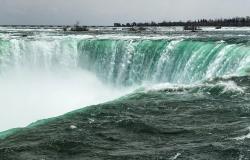We should Look to Nature for Solutions to the Global Water Crisis. Here’s Why

It's time to let nature back into our water management systems.
New York City faced a challenge in the 1990s: the city needed a new water filtration system to serve its nearly 8 million people. But the prospect of spending $6-10 billion on a new water treatment plant, and another $100 million on annual operating costs, was daunting. So city officials took a closer look at the source of their water: the Catskill Mountains.
Water from the Catskills flows through 120 miles of forests, farmlands and towns to reach New York City. When that landscape is healthy, it acts as a natural purifying system, but certain development and agricultural practices can result in impaired water quality. For city officials, reaching out to local farmers and landowners and compensating them to restore and conserve their lands in the watershed, combined with some land acquisition, proved to be significantly cheaper than building and operating a new treatment plant.
New York’s example showed the benefits of public-private partnerships in such situations, and demonstrated that unlocking nature-based solutions can be cheaper and more efficient and produce additional benefits compared to conventional built, “grey” infrastructure. This was the moment of inspiration for water funds.
Water funds are a collective investment vehicle in which stakeholders collaborate to implement nature-based source water protection. Downstream water users invest in upstream land and water management practices, compensating upstream land managers for restoration activities and better management of agricultural land. Rural landowners and communities can benefit economically from these investments as well. Mutual benefits are the hallmark of successful water funds.
Given that more than 40% of source watersheds worldwide have been degraded by development, resulting in impaired downstream flows, nature-based source water protection can be one of the most effective ways to improve water quality and quantity for urban areas. A study by The Nature Conservancy (TNC) estimated that four out of five cities could improve water quality using nature-based solutions, and potentially 1,000 cities globally would see a positive return on investment based on reductions in total utility expenditures. Furthermore, these solutions often deliver other forms of value, such as increased agricultural yields, improved community health and carbon sequestration.
One example is the Upper Tana Nairobi Water Fund, which addressed the challenge of severe erosion and nutrient runoff into Nairobi’s water supplies by helping upstream farmers implement practices that both reduce erosion and increase agricultural yields. Today, such activities in the watershed help sustain the water supply for 9.3 million people and will generate an estimated $21.5 million in long-term benefits for local communities and businesses.
The future of water security
Since TNC launched its first water fund in Quito, Ecuador, in 2000, we’ve established 34 water funds around the world, with 30 more in development throughout Latin America, North America, Africa and Asia. But this is not enough. By 2025, at least two-thirds of the world’s population will likely be living in water-stressed areas. The question we face now is: how do we implement these solutions at the scale needed to truly make a dent in global water insecurity?
It’s not enough for TNC to keep developing water funds, though we will. We also need more partners in the public and private sectors to invest in these practices.
Utilities are one of those key partners – especially companies such Veolia and Suez, with an international presence. Veolia, for example, is exploring how changing agricultural practices and ecosystem enhancements can ensure a more sustainable water supply. Suez, meanwhile, is incorporating wetland restoration into its practices to improve water quality and reduce operating costs. In addition, there are many examples of visionary local utilities actively investing in both green and grey infrastructure to deliver sustainable water to the communities and cities they serve.
Of course, it is agriculture and industry, not domestic use, that represents the vast majority of water consumption. Businesses with high water needs have an enormous interest in ensuring they have stable water supplies, and can have an equally enormous impact on global water security. Consider the example of PepsiCo. All along its supply chain and production processes, PepsiCo depends on reliable water supplies, and the company has accordingly established an integrated approach to watershed management, including partnerships with TNC to restore watersheds in Latin America and the United States.
To date, more than 100 corporations have invested more than $38m in water funds. Having more private-sector actors invest seriously in nature-based solutions – and having city and state regulators realize the benefits of these solutions and incorporate them into government oversight – can help us move the needle on these challenges. On top of that, we can protect ecosystems that deliver a range of other functions, including climate mitigation, increased agricultural yields and improved community health. This goes beyond providing clean water – it’s about making human development fundamentally more sustainable around the world.
Nature can deliver better water security for more than a billion people. It’s an ambitious goal – but with the right partnerships and stakeholders involved, we can have a measurable, positive influence on planetary health overall.
To learn more about our work with cities and stakeholders to develop water funds, visit nature.org/watersecurity.
Andrea Erickson, Acting Managing Director, Water Security The Nature Conservancy.
This post first appeared on the World Economic Forum's Agenda blog.
Image credit: Richard Heyes via Flickr (CC BY 2.0) https://www.tecmark.co.uk/


